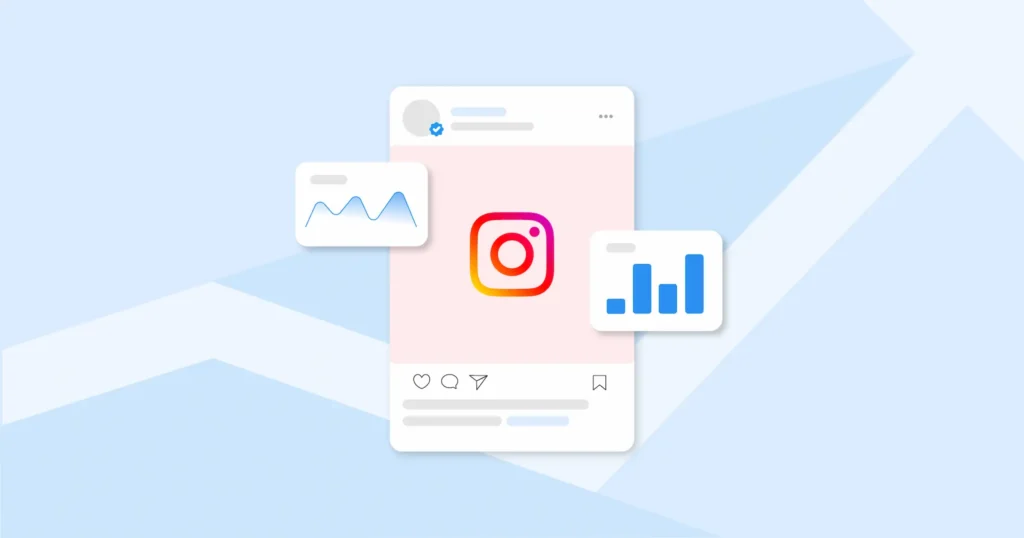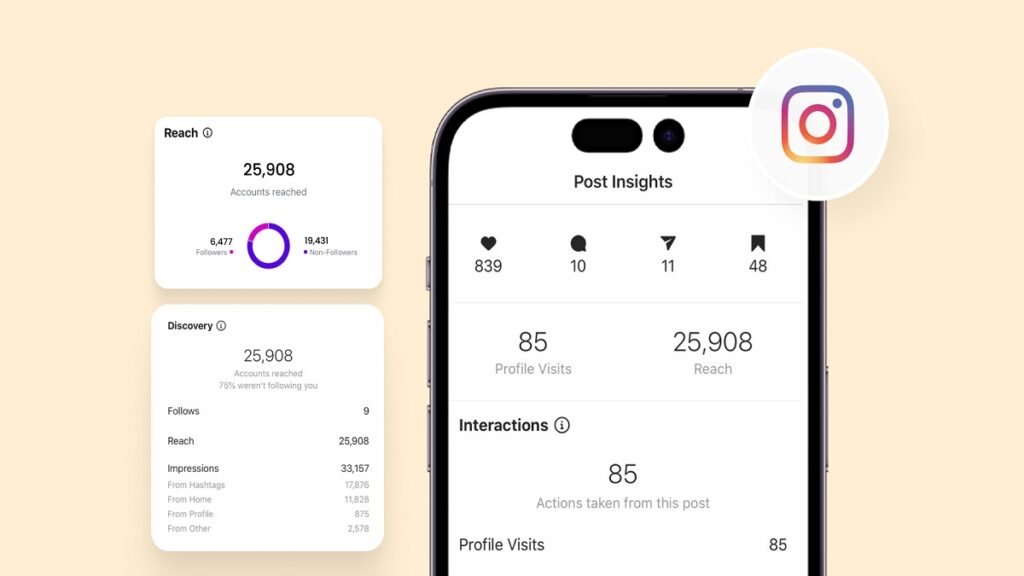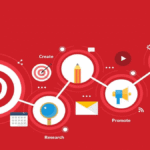Instagram has become one of the most influential social media platforms globally, with over a billion active users. As a business or content creator, using the benefits of Instagram analytics effectively can help you make informed decisions, optimize your content strategy, and grow your audience. In the age of data, relying on instincts and guesswork is no longer enough.
Instagram analytics provides valuable insights that allow users to track, understand, and enhance their performance on the platform. In this article, we will explore some benefits of using Instagram analytics, showcasing how leveraging data-driven insights can elevate your Instagram strategy, improve engagement, and ultimately contribute to your business goals.
Power Of Instagram Analytics

1. Understanding Your Audience Demographics
One of the most critical benefits of Instagram analytics is understanding who your followers are. Instagram provides detailed demographic information about your audience, including age, gender, location, and even the times they are most active on the platform. By using these insights, you can tailor your content to better appeal to your specific audience, ensuring that you’re reaching the right people with the right messages.
Why it matters: Knowing the demographics of your audience allows you to make informed decisions about your content strategy. For instance, if you notice that the majority of your followers are from a specific location or share similar interests, you can create content that resonates with them on a deeper level. Additionally, understanding when your audience is most active ensures you can post at optimal times, increasing the chances of your content being seen and engaged.
Example: If your target demographic consists mainly of women aged 25-34 in New York City, you can tailor your content and promotions to cater to their preferences and lifestyles. You might also schedule your posts during peak times when they’re most likely to be on Instagram, increasing your reach and engagement.
2. Tracking Engagement Rates and Content Performance
Engagement is a vital metric that measures how your followers interact with your content. Instagram analytics provides data on likes, comments, shares, saves, and overall interactions. By tracking engagement over time, you can identify what types of content resonate with your audience and which strategies are working best.
Why it matters: Engagement rates are a direct indicator of your content’s effectiveness. High engagement means your audience finds value in your posts, while low engagement may signal that you need to adjust your approach. By identifying high-performing content, you can replicate those strategies for future posts, increasing your chances of success.
Example: If you find that your audience engages more with behind-the-scenes content or educational posts rather than promotional ones, you can prioritize these types of posts moving forward. Instagram’s analytics allow you to track the success of these posts in real time, so you can quickly adapt to what works.
3. Monitoring Follower Growth and Retention
The benefits of using Instagram analytics track your follower growth and provide insights into whether you’re gaining new followers consistently. This data also highlights any spikes or drops in followers, which can help identify trends and potential issues with your content or strategy.
Why it matters: Tracking follower growth is essential for measuring the success of your Instagram efforts. If you’re seeing a steady increase in followers, it’s an indication that your content is resonating and that your account is growing. Conversely, a drop in followers might suggest that your content isn’t engaging enough and adjustments need to be made.
Example: Suppose you see a sudden increase in followers after posting a particular type of content, such as a giveaway or collaboration with an influencer. This insight allows you to replicate the success of that post, potentially gaining even more followers in the future. On the other hand, if you notice a significant drop in followers after posting a controversial topic, you might want to rethink your content strategy.
4. Identifying Top-Performing Hashtags
Hashtags are a powerful tool on Instagram that can help your posts reach a wider audience. Instagram analytics allows you to track the performance of the hashtags you use, revealing which ones are driving traffic and engagement. This data helps you refine your hashtag strategy, ensuring you’re using the most effective hashtags to reach your target audience.
Why it matters: The right hashtags can significantly increase your reach and visibility on Instagram. By analyzing the performance of hashtags, you can focus on the ones that are working and avoid using irrelevant or ineffective ones. Over time, this can help you build a more targeted and engaged following.
Example: If you use a hashtag like #fitnessmotivation and it consistently drives more engagement than other hashtags, it’s a good idea to continue using it or look for similar, high-performing hashtags. Conversely, if certain hashtags aren’t bringing in engagement, you can replace them with more relevant or trending ones.
5. Optimizing Post Timing and Frequency
The benefits of Instagram analytics show you the times when your followers are most active on the platform. By identifying these peak times, you can schedule your posts to align with when your audience is online and likely to engage with your content. This can lead to increased visibility and better performance for your posts.
Why it matters: Posting at the right time is crucial for maximizing engagement. If you post when your audience isn’t active, your content may get buried in their feeds, leading to lower engagement rates. Instagram analytics provides you with the data you need to schedule posts at the most opportune moments.
Example: If analytics show that your followers are most active between 7 PM and 9 PM on weekdays, you can plan your posts around that timeframe to ensure maximum visibility. Additionally, tracking your post frequency and understanding how often your followers interact with your content will help you strike the right balance, ensuring you’re posting often enough without overwhelming your audience.
6. Analyzing Story Performance
Instagram Stories are a powerful tool for engaging your audience and sharing time-sensitive content. Instagram analytics allows you to track the performance of your stories, including metrics such as views, taps, swipes, and exits. This data can help you determine which types of stories your audience enjoys and which ones might need improvement.
Why it matters: Stories are ephemeral, meaning they disappear after 24 hours. However, they still provide valuable insights into how your audience engages with your content. By analyzing the performance of your stories, you can optimize them to create more engaging content that encourages your audience to interact and engage.
Example: If your stories featuring behind-the-scenes content receive high engagement while your product promotions lead to more exits, you can focus on creating more personalized, authentic content in your stories and less on overt sales messages.
7. Tracking Website Traffic from Instagram
For businesses and influencers who want to drive traffic to their websites, the benefits of using Instagram analytics can provide valuable insights into how much traffic is coming from your Instagram profile. You can track the performance of links in your bio, stories, and posts to understand how well your Instagram account is driving traffic to your external sites.
Why it matters: Monitoring website traffic from Instagram allows you to assess the effectiveness of your calls-to-action (CTAs) and determine if your Instagram strategy is successfully driving visitors to your website or landing pages. If you’re running a campaign or promoting a product, tracking this traffic helps gauge the success of your efforts.
Example: If you notice that the link in your bio drives a significant amount of traffic to a specific landing page or blog post, it indicates that your content and CTAs are resonating with your audience. Conversely, if there’s little to no traffic from Instagram, you may need to refine your CTAs or adjust your strategy.
8. Measuring Return on Investment (ROI) for Instagram Ads
For businesses running Instagram ads, analytics is essential for tracking the performance of your paid campaigns. Instagram provides data on impressions, clicks, conversions, and other key metrics related to your ads. By analyzing these metrics, you can determine the ROI of your Instagram ad campaigns and make data-driven decisions to optimize future campaigns.
Why it matters: Tracking the ROI of your Instagram ads helps you understand whether your ad spend is delivering the desired results. With Instagram’s robust analytics, you can identify which ads are performing well, which need improvement, and which should be discontinued. This data helps you maximize the effectiveness of your ad budget.
Example: If you’re running an ad campaign for a new product launch, Instagram analytics can show you which demographics are engaging the most with your ad. If certain groups are responding better than others, you can adjust your targeting for future ads to reach those groups more effectively.
9. Tracking Competitor Performance
Instagram analytics also allows you to monitor and benchmark your account against your competitors. By tracking your competitors’ follower growth, engagement rates, and content strategies, you can identify areas where you can improve or differentiate your approach.
Why it matters: Understanding how your competitors are performing on Instagram helps you stay competitive and uncover growth opportunities. By analyzing their top-performing content and engagement strategies, you can learn from their successes and avoid their mistakes.
Example: If a competitor’s post receives higher engagement due to the use of specific hashtags or posting at certain times, you can adjust your strategy to incorporate these insights, boosting your chances of success.
Unlock The Power Of Instagram Analytics
The benefits of Instagram analytics offer a comprehensive suite of metrics that empower users to make informed decisions about their content and audience engagement strategies. By examining data such as follower demographics, engagement rates, and reach, you can gain a clear understanding of what resonates with your audience and what doesn’t.
For example, analyzing audience demographics—such as age, gender, location, and interests—helps you tailor your content to fit their preferences and needs. This targeted approach increases the likelihood that your posts will connect with the right people at the right time. Similarly, tracking content engagement metrics like likes, shares, comments, and saves provides direct insight into the effectiveness of your posts and campaigns.
Understanding which content types generate the highest engagement allows you to optimize your future posts and develop a more successful content strategy. Beyond engagement, Instagram analytics also provides valuable insights into your growth trends, such as follower acquisition and retention rates, helping you assess whether your efforts are translating into a growing and engaged community.
By continuously monitoring and refining your approach based on these insights, you can adapt to changing audience behaviors and preferences, ensuring that your content stays relevant and impactful.
For businesses and influencers alike, Instagram analytics is a powerful tool that not only helps optimize content but also enables you to track your return on investment (ROI) for ads and promotions, making it easier to measure success and refine future strategies. In today’s competitive social media landscape, utilizing Instagram analytics is essential for achieving sustainable growth and maintaining a dynamic, engaged online presence.
FAQ
Q: Does location appear in Instagram analytics?
A: Just go to your profile and choose “Professional Dashboard” to have access to Instagram Insights. You can get comprehensive details on your audience here, such as their location, gender, and age.
Q: What is the price of Instagram analytics?
A: Cost: Three levels. The monthly cost of the Standard plan is $99, the professional plan is $149, and the advanced plan is $249. Each extra profile costs $25 per month. Trial period without charge: Yes, new customers may sign up for a 30-day free trial.
Q: Is Instagram compatible with Google Analytics?
A: Although Instagram cannot be directly tracked by Google Analytics 4, you may use UTM (Universal Transverse Mercator) parameters on your Instagram links to monitor clicks and interactions to gauge website traffic from Instagram.







I am extremely inspired along with your writing abilities and also with the
layout in your weblog. Is that this a paid subject matter or did you customize it your self?
Anyway keep up the excellent high quality writing, it’s uncommon to peer a nice weblog like this one nowadays.
I’m really grateful for your feedback! The design is something I put together myself. Your support means the world!